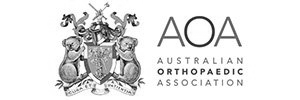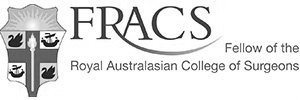Shoulder Arthroscopy
What is a Shoulder Arthroscopy Surgery?
Shoulder Arthroscopy is a surgical procedure in which an arthroscope is inserted into the shoulder joint.
The procedure is a very common minimally invasive procedure and is used for either:
- Diagnosis - to clearly visualise, inspect and evaluate the affected area, and/or
- Treatment - to attach, cut, shave, remove, smooth, position, repair, secure or suture
the affected areas including the tendons, ligaments, cartilage, muscles, joints and bones.
Arthroscopy uses smaller incisions that allow faster healing, quick recovery and less scarring.
What is an Arthroscope
The term ‘arthroscope’ comes from two Greek words, arthro-, meaning joint, and -skopein, meaning to examine.
Arthroscope is a small fiber-optic viewing instrument made up of a tiny lens, light source and video camera that is connected to a TV screen used by your surgeon to see inside your joint. If necessary other surgical instruments can be inserted through the arthroscope or through additional small incisions.
These other instruments can be used to perform cleaning, cutting, tying knots or removal of material from the joint.
What Does Shoulder Arthroscopy Treat
Arthroscopy may be recommended for shoulder problems such as:
- Evaluation and treatment of instability
- A torn or damaged cartilage ring (labrum) or biceps tendon
- A torn rotator cuff
- Stiffness of the shoulder
- Subacromial decompression
- Arthritis of the end of the clavicle
- Treatment of frozen shoulder
- Removal of loose bodies
- Debridement / drainage of shoulder joint infection
- Inflammation causes swelling, pain, and stiffness in a damaged or diseased shoulder joint.
When is Shoulder Arthroscopy Indicated
The majority of shoulder problems are caused by injury, overuse, and age-related wear and tear. If you have a painful condition that is not responding to non-surgical treatment, your doctor may recommend Shoulder Arthroscopy
Shoulder arthroscopy can help relieve the pain caused by a variety of issues that affect the rotator cuff tendons, labrum, articular cartilage, and other soft tissues surrounding the joint. The following are examples of common arthroscopic procedures:
- Repair of the rotator cuff
- The labrum can be removed or repaired.
- Ligament reconstruction
- Surgical removal of inflamed tissue or slack cartilage
- Recurrent shoulder dislocation repair
Shoulder Arthroscopy Benefits
There are clear advantages to having shoulder arthroscopy. Not only will you benefit from a repaired shoulder, but the arthroscopic procedure less traumatic to the muscles, ligaments and tissues than the traditional method of surgically opening the shoulder with long incisions (open techniques).
The procedure's minimal invasiveness allows:
- reduced scarring and scar tissue,
- less stiffness and allowing more range of motion
- less blood loss and reduced bruising
- faster healing and recovery with less pain
- lower complication rates
When compared to living with the damage or inflammation that was impeding its use, you will be able to regain more use of your arm and shoulder.
Shoulder Arthroscopy Procedure Steps
Arthroscopic surgical procedures are often performed on an outpatient basis and the patient is able to return home on the same day. The procedure is performed after appropriate diagnostic assessments, pre surgery checks and preparations are complete in a hospital or day surgery and can take less than an hour, but the duration depends of other specific surgical outcomes
The procedure is normally performed under a general anaesthetic and includes the following steps:
- A small incision(s) is made, and an arthroscopic camera is inserted through one of them.
- A sterile solution is pumped to the joint which expands the shoulder joint
- The area is clearly viewed by the surgeon from a nearby monitor in the operating room.
- Once the problem has been identified, your surgeon can treat the problem by inserting surgical instruments through other portals
- Surgical actions including shaving, cutting, grasping, suture passing, and knot tying can be achieved arthroscopically.
- Special devices are frequently used to anchor stitches into bone.
Shoulder Arthroscopy Surgery Preparation
Once you and the doctor have decided that surgery is required, preparation is necessary to achieve the best results and a quick and problem free recovery.
- Infections - Treat any tooth, gum, bladder or bowel problems before surgery to reduce the risk of infection
- Smoking - Stop or cut down smoking to reduce your surgery risks and improve your recovery
- Weight - Consider losing weight (if overweight) before surgery
- Medications - Refrain from taking medications or dietary supplements that may increase your risk of bleeding - refer Medication Information
- Fasting - Depending on the type of anaesthesia used, your doctor may advise you to refrain from eating and drinking six to twelve hours before the procedure.
- Getting Home - You will not be allowed to drive yourself home after the procedure, so make arrangements for someone to pick you up. If you live alone, arrange for someone to check on you that evening or, ideally, to stay with you for the rest of the day.
- Loose Clothing - If you're having surgery, wear loose, comfortable clothing, such as baggy gym shorts and slip-on shoes, so you can easily undress and dress.
Returning Home After Surgery
When you go home you need to take special precautions around the house to make sure it is safe. Your post operative plans should include:
- Mobility or Stability - changes (rails in your bathroom, ramps for stairs)
- Sleeping - modify your sleeping arrangements (especially if you are sleeping upstairs) for easy access
- Access - ensure you have easy access to food, water, medications and any other essentials
- Showering - will be allowed once the wound is healed, or as indicated
Assess your home situation to ensure you have adequate home support in the first few weeks following surgery. If you live alone it may be necessary to arrange a package of community care to help during the first few weeks at home.
Shoulder Arthroscopy Surgery Process
Shoulder Arthroscopy Rehabilitation Program
Shoulder Arthroscopy Risks & Complications Associated
Surgical Follow Ups
How Risks Are Minimised
Get Moving Quickly
Early mobilisation is a major preventive measure. We strongly encourage you to get moving and out of bed as soon as possible after the operation to restore normal blood flow in the legs.
How Can I Minimise Post Operative Complications
Blood clots (DVT or PE)
All patients receive a number of treatment measures to reduce the risk of blood clots. These include
- Injections of heparin during and after surgery,
- Sequential calf compression device (SCD) whilst on the operating table, and
- Special leg stockings (TEDS)
As a result of these measures, we have never had a patient develop a deep venous thrombosis. Any patient who is at high risk of a blood clot (such as a history of blood clots or clotting disorders) may be asked to continue heparin (Clexane) injections for 10 days after the surgery in addition to the other measures. This can be done at home, and we will show you how.
What Are the Consequences of Surgery?
Sometimes the potential risks and consequences of your surgical procedure need to be weighed against the benefits of a successful surgical outcome.
Like most surgery these benefits can include:
- Freedom from pain
- Increase movement
- Greater Flexibility,
- Maintained Independence
- Improved outlook, and
- Longer more enjoyable life
Although the recurrence of the presenting problem is not very common, after surgery, you would need to follow preventive measures.
It is important to avoid high impact activities during the early phase of recovery to minimise the risk of further injury. If there are any postoperative concerns or pain, please do not hesitate in contacting our rooms.





